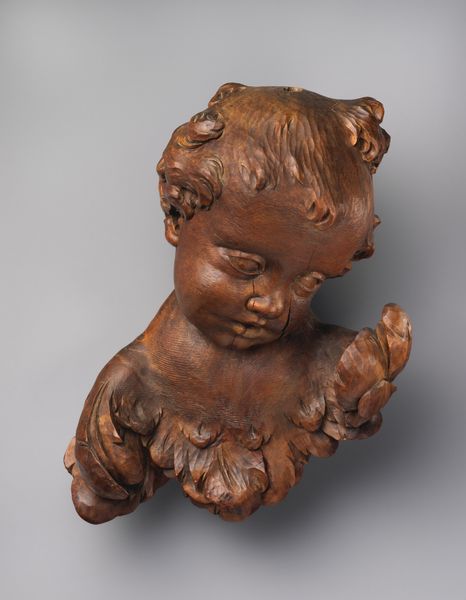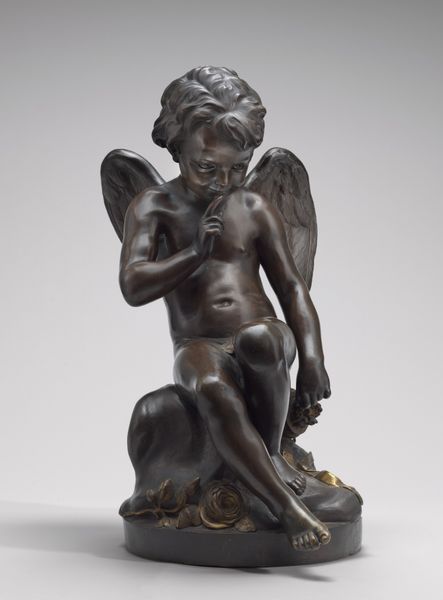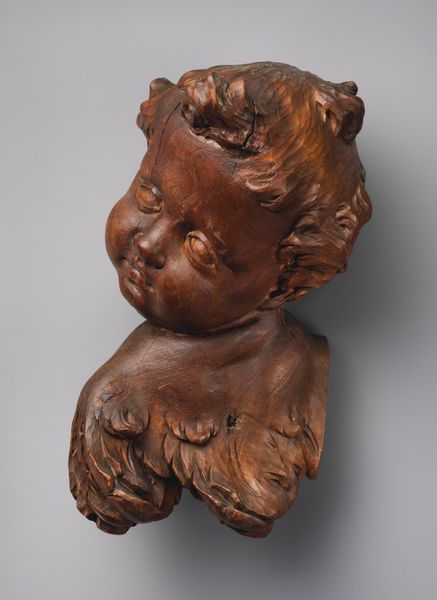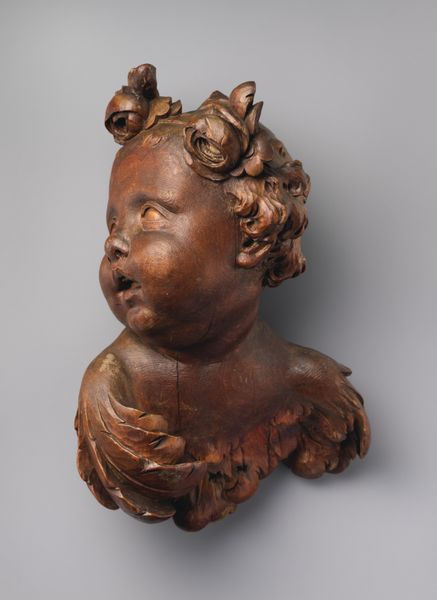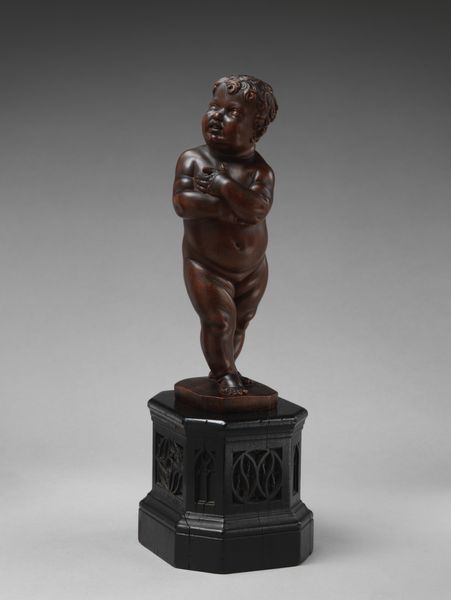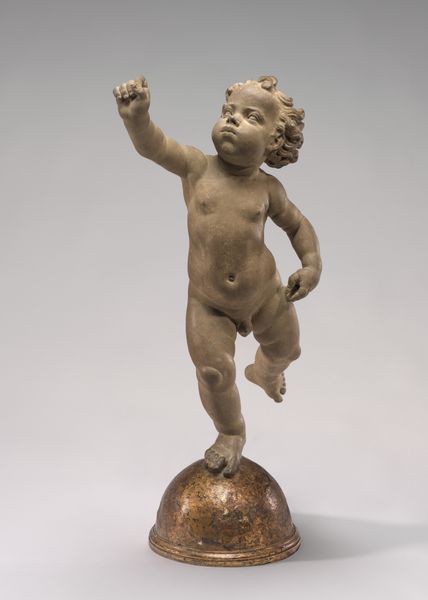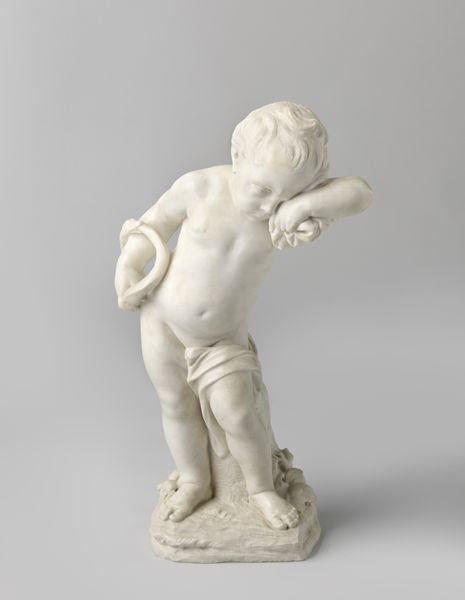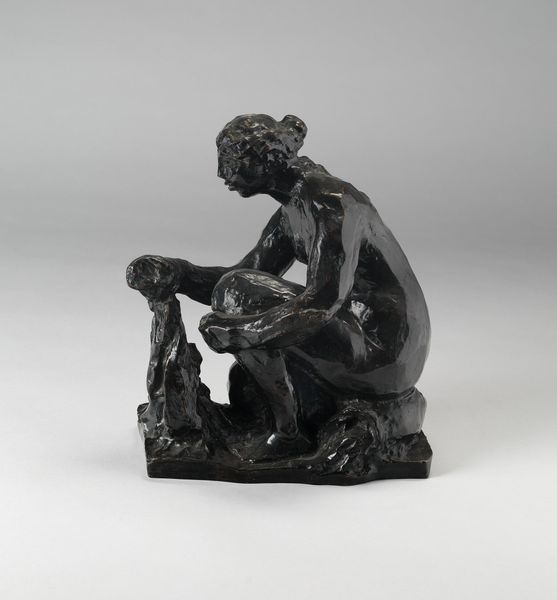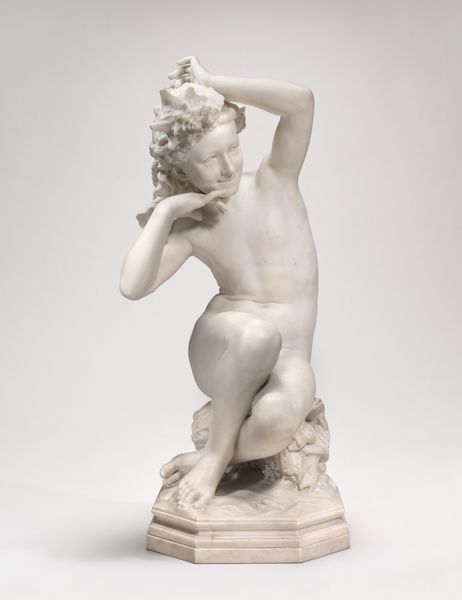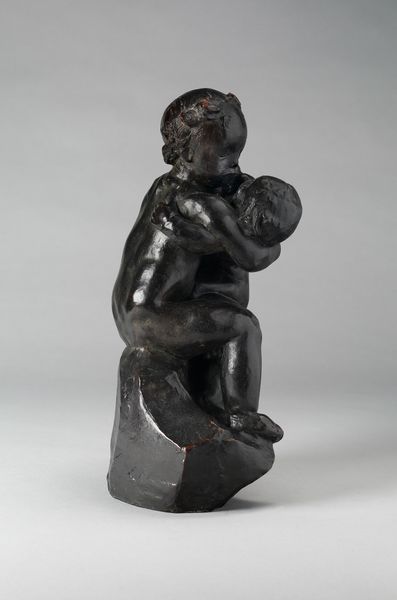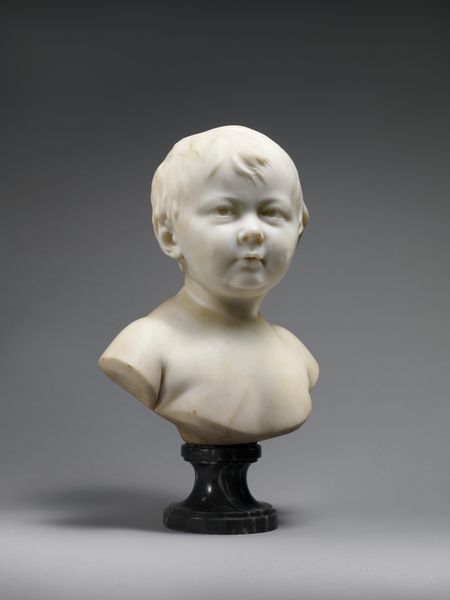
bronze, sculpture
#
neoclassicism
#
sculpture
#
bronze
#
figuration
#
sculpture
#
decorative-art
#
italian-renaissance
Dimensions: Overall (confirmed): 7 5/8 × 12 7/16 × 6 1/8 in. (19.4 × 31.6 × 15.6 cm)
Copyright: Public Domain
Andrea del Verrocchio made this bronze reclining putto in Florence, sometime in the second half of the fifteenth century. The image of the putto, or male child, was a popular one in Renaissance Italy. Stemming from classical art, and often deployed in service of Christian themes, these figures became emblems of civic pride in Florence. Here, the putto reclines in a style evocative of ancient Roman sculpture. Consider the figure’s corpulence, the apparent comfort, and the suggestion of infantile garrulousness in his facial expression. The institutional history is crucial to understand its social context. Verrocchio's workshop was supported by powerful patrons like the Medici family. Art academies and workshops, like that of Verrocchio, played a vital role in shaping artistic production, dictating aesthetic norms, and mediating the relationship between artists and patrons. Art history uses surviving documents, stylistic analysis, and social theory to understand the place of artworks in the world. It can tell us much about the social conditions that made them possible.
Comments
No comments
Be the first to comment and join the conversation on the ultimate creative platform.
